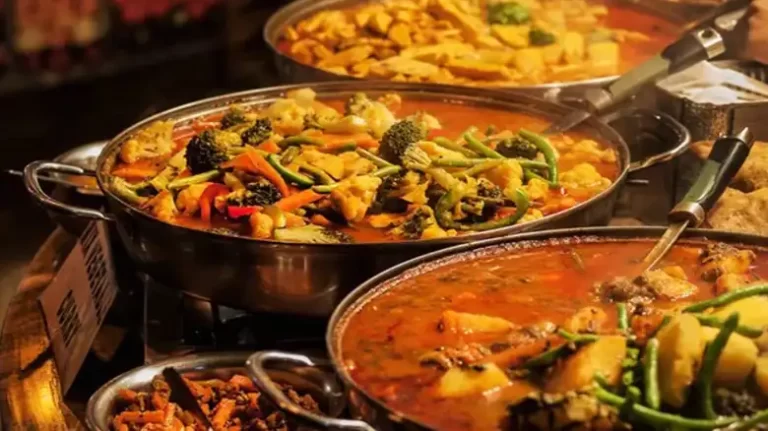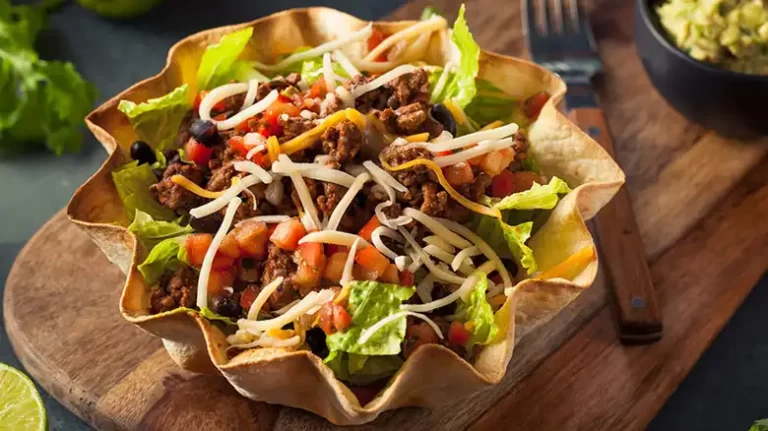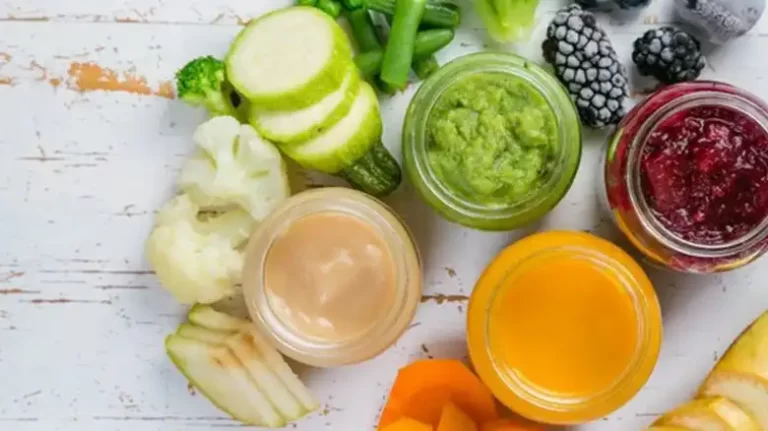When Can I Eat Spicy Food After Wisdom Teeth Removal
Wisdom teeth removal is a common dental procedure, and while it’s a necessary step to ensure oral health, it can be a bit of a spicy inconvenience. You may be left wondering when you can rekindle your love affair with spicy foods.
In this comprehensive guide, we’ll explore the healing timeline, why spicy food can be a concern, and the signs that indicate you’re ready to embrace the heat once more.

Healing Timeline After The Wisdom Teeth Removal
Wisdom teeth removal is a dental procedure many individuals undergo, and the post-surgery period can be a test of patience and discomfort. Understanding the healing timeline is crucial to ensure a smooth recovery.
Immediate Post-Extraction Period
Right after the removal of your wisdom teeth, the initial stage is characterized by some discomfort. Here’s what you can expect:
In the first few days, it’s common to experience swelling around the surgical area, as well as some discomfort or mild pain. This is your body’s natural response to the surgery.
During this period, you should stick to a soft diet to avoid any irritation or injury to the healing wounds. Mashed potatoes, yogurt, and smoothies can be your go-to choices.
Days 4-7: Early Signs of Improvement
As the first week progresses, you’ll begin to notice some positive changes:
The initial swelling gradually reduces, and you’ll start feeling more comfortable. While you might still experience some pain, it tends to become more manageable with each passing day. Pain medication prescribed by your dentist can help.
By this time, you can begin to reintroduce some solid foods, but they should still be soft and easy to chew. It’s not yet the time for spicy foods, though.
Weeks 2-4: Extended Recovery Phase
The recovery journey doesn’t end after the first week. It’s important to acknowledge that healing is a gradual process:
Your oral tissues are still healing, even though you might feel better. It’s crucial to allow ample time for your mouth to fully recover.
While it may be tempting to rush back into your regular diet, doing so can jeopardize your healing process. Continue with soft foods and give your mouth the time it needs.
Why Spicy Food is a Concern
Wisdom teeth removal is a common dental procedure, and while it’s essential for oral health, it can disrupt your usual eating habits. In the aftermath of the surgery, consuming spicy food becomes a matter of concern due to several reasons:
Inflammation and Irritation
Spicy foods, filled with potent compounds like capsaicin, can trigger inflammation and irritation in the sensitive oral tissues that are still healing. This can result in heightened discomfort and extended recovery times.
Risk of Infection
The oral cavity is more susceptible to infection post-wisdom teeth removal. Spicy foods, especially those with high acidity or heat, can create an environment conducive to bacterial growth. This makes it crucial to avoid such foods during the early stages of healing.
Impact on Pain Management
Eating spicy foods too soon can exacerbate pain and discomfort. After the removal of wisdom teeth, managing pain is a priority, and consuming spicy foods can set back your progress in this regard. It’s wise to prioritize pain management and avoid any added discomfort.
Signs of Healing Readiness
Recovery from wisdom teeth removal is a gradual process, and knowing when it’s safe to reintroduce spicy food is essential.
To make that determination, you should keep an eye out for specific signs of healing readiness. These indicators signal that your mouth is on the path to recovery and can handle the heat.
1. Reduced Pain and Discomfort
One of the clearest signs that you might be ready to spice up your diet is a decrease in pain and discomfort. In the immediate aftermath of the extraction, it’s normal to experience some level of pain.
However, as days pass, the pain should gradually subside. When you can chew and eat without wincing or grimacing, it’s a positive indication that your mouth is on the mend.
2. Swelling Subsides
Post-surgery, facial swelling is a common occurrence. It can affect your ability to eat comfortably and can make spicy foods particularly challenging. If you notice a significant reduction in swelling, especially in the affected areas, this is a promising sign that you may be ready to reintroduce spicier flavors.
3. Normal Mouth Opening
The ability to open your mouth fully without experiencing pain or discomfort is another critical sign of healing readiness. Restricted mouth opening can be indicative of lingering inflammation or soreness.
When you regain your full range of motion, it means that your oral tissues have made significant progress in their recovery journey.
4. Wound Healing
Closely inspect the surgical sites where your wisdom teeth were extracted. If the wounds are visibly closing up and there’s minimal or no discharge, it’s a strong indicator that the healing process is well underway.
Healthy, closed wounds suggest that your mouth is becoming less susceptible to infection and irritation.
5. Consistent Oral Hygiene
Proper oral hygiene is a fundamental aspect of recovery. If you’ve been diligently following your dentist’s instructions for post-operative care and are maintaining good oral hygiene without discomfort or difficulty, it’s a reassuring sign that your mouth is ready for a wider range of foods, including spicy ones.
6. Consultation with Your Dentist
It’s always advisable to consult your dentist or oral surgeon before making the final decision to reintroduce spicy foods. They can assess your specific case, evaluate your healing progress, and provide personalized guidance on when it’s safe for you to enjoy the spicy dishes you love.
Gradual Transition to Spicy Food
After wisdom teeth removal, the thought of indulging in your favorite spicy dishes might feel like a distant dream. However, with a careful and gradual approach, you can navigate your way back to the world of flavorful and zesty foods. Here’s how to make a safe and satisfying transition:
Choose Milder Spices
As you ease your way into consuming spicy food, opt for milder spices initially. Consider using seasonings like paprika, cumin, or mild chili powder to reintroduce your taste buds to the gentle warmth of spices.
Soft and Well-Cooked Dishes
When resuming your spicy food journey, focus on dishes that are soft in texture and well-cooked. Creamy curries, gently simmered stews, and tender stir-fries are excellent choices. These options reduce the risk of irritation to your healing oral tissues.
Dilute Spicy Dishes
If your craving for heat is too strong, consider diluting your spicy dishes with non-spicy elements. Incorporate ingredients like plain yogurt, coconut milk, or broth to temper the intensity of the spices, making the experience more manageable for your post-surgery palate.
Add Cooling Ingredients
To balance the heat, include cooling ingredients in your spicy dishes. Ingredients like cucumber, mint, or yogurt can help counteract the spiciness, providing a more comfortable dining experience as your mouth readjusts.
Portion Control
While you may be excited to enjoy spicy food again, it’s important to exercise portion control. Begin with small servings to savor the flavors without overwhelming your taste buds or risking discomfort. Gradually increase your portions as your mouth adapts to the spiciness.
Foods to Avoid Initially
After having your wisdom teeth removed, the road to recovery requires a careful dietary approach. To ensure a smooth healing process and avoid complications, it’s vital to be aware of the foods to avoid during the initial stages.
In this section, we’ll delve into the specific foods that should be on your “do not eat” list, providing essential guidance to safeguard your post-surgery comfort and well-being.
1. Spicy Foods
Spicy foods are perhaps the most obvious category to avoid in the initial days after wisdom teeth removal.
The heat and irritation they can cause in your mouth can intensify pain, prolong healing, and even lead to complications. Hot sauces, chili peppers, and fiery curries are examples of items to steer clear of.
2. Acidic Foods
Acidic foods can be equally detrimental to your post-surgery oral health. Items like citrus fruits (oranges, lemons), tomatoes, and vinegar can create a harsh environment that delays the healing process and increases the risk of infection. It’s best to keep them off your plate for a while.
3. Crunchy Snacks
Chips, hard tacos, and other crunchy snacks are to be avoided due to the potential damage they can cause to the healing surgical sites. The act of chewing on hard, crispy foods can lead to unnecessary irritation and slow down your recovery.
4. Seeds and Nuts
Seeds and nuts, despite their nutritional value, can pose a risk in the early days of recovery. Their small, hard nature makes them a potential source of irritation and discomfort. It’s wiser to save these protein-packed snacks for a later stage in your healing process.
5. Tough Meats
Tough meats like steak or jerky require substantial chewing, which can strain the surgical sites and delay the healing process. During the initial recovery period, it’s best to opt for softer, more easily chewed protein sources to prevent unnecessary pain and discomfort.
6. Carbonated Drinks
Carbonated beverages, such as sodas, sparkling water, and carbonated soft drinks, should be avoided as the gas can create uncomfortable pressure and bubbles in your mouth. Opt for non-carbonated, soothing beverages to keep your oral healing on track.
7. Hard and Sticky Candy
Satisfying a sweet tooth with hard or sticky candy is not advisable in the early stages of recovery. These candies can damage healing tissues, cause discomfort, and potentially lead to complications. Choose soft, non-sticky alternatives for your sugar fix.
8. Crusty Bread and Hard Rolls
Crusty bread and hard rolls can be challenging to bite and chew, making them unsuitable for the initial healing phase. Their tough texture can strain the surgical sites and hinder the recovery process. Opt for softer bread varieties for easier consumption.
9. Spicy Condiments
In addition to avoiding spicy main dishes, be cautious of condiments like hot mustard, wasabi, or horseradish. These condiments contain potent spices that can irritate your mouth and slow down the healing process. Choose milder alternatives for flavoring your food.
10. Dairy Products with High Acidity
While dairy products like yogurt can be soothing for some, avoid those with high acidity, like sour cream or certain types of cheese. High-acid dairy can exacerbate discomfort and irritate healing sites. Opt for milder, neutral dairy products.
Common Questions
Q1: How soon after wisdom teeth removal can I start eating spicy food?
A1: It’s best to avoid spicy foods during the initial days and even the first few weeks after wisdom teeth removal. Spicy foods can irritate the surgical sites and prolong the healing process.
It’s crucial to follow your dentist’s or oral surgeon’s guidance, but typically, you can consider reintroducing milder spices and dishes after the first month or when you feel comfortable.
Q2: Can I consume mild salsa or hot sauce during the early stages of recovery?
A2: It’s generally advisable to stay away from hot sauces and spicy salsas in the immediate aftermath of wisdom teeth removal. Start with milder flavors and gradually work your way up as your healing progresses. Your comfort and pain levels should guide your decision.
Q3: Are there any cooling and mildly spicy foods I can enjoy?
A3: Yes, there are options that provide a balance between flavor and comfort. Dishes like cucumber raita, yogurt-based curries, or mild chili dishes can offer a soothing yet slightly spicy experience. Just ensure the spiciness is manageable for your healing mouth.
Q4: What spices should I avoid completely during the recovery period?
A4: Spices like cayenne pepper, hot chili powder, and habanero pepper should be avoided during the initial stages of recovery. These spices are exceptionally hot and can cause intense irritation and pain in your mouth.
Q5: Can I use spices like turmeric and ginger in my dishes?
A5: Yes, spices like turmeric and ginger can be used in your dishes. They have anti-inflammatory properties and can actually assist in the healing process. However, use them in moderation and ensure they are well-incorporated into your meal.
Q6: Are there any warning signs that I may be introducing spicy foods too soon?
A6: Yes, there are warning signs. Increased pain, heightened sensitivity, swelling, and difficulty in opening your mouth are indications that spicy foods may not be suitable at that moment. Listen to your body and be patient in your journey to reintroduce spiciness.
Q7: Should I consult my dentist before reintroducing spicy foods?
A7: It’s a good idea to consult your dentist or oral surgeon before reintroducing spicy foods. They can provide personalized guidance based on your specific case and ensure you’re on the right track for a smooth recovery.
Q8: Can I take pain medication before attempting spicy foods?
A8: If you plan to reintroduce spicy foods, you can consider taking a pain reliever recommended by your healthcare provider before your meal. This can help manage any discomfort or pain that may arise from consuming spicy foods.
Q9: What should I do if I experience discomfort after eating spicy food during the recovery period?
A9: If you experience discomfort after consuming spicy food, rinse your mouth with cool water and consider using a saltwater rinse. Avoid further consumption of spicy foods until you feel more comfortable.
Q10: When will I be able to enjoy my favorite spicy dishes without concern?
A10: The exact timing varies from person to person, but typically, after the first month of recovery, you can gradually reintroduce your favorite spicy dishes. Ensure that you do so in moderation and pay attention to your body’s signals to avoid any setbacks in your healing process.
Final Verdict
In the grand journey to rediscover the joys of spicy foods after wisdom teeth removal, patience is your best friend. Focus on a gradual transition, pay attention to the signs of healing readiness, and prioritize your oral health.
Before you know it, you’ll be savoring those fiery flavors once more, with a fully healed and resilient mouth.



